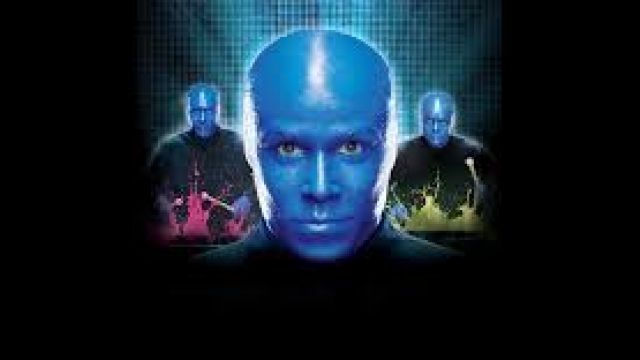Blue Man Group
Off-Broadway phenomenon Blue Man Group is headed for Australia with their internationally acclaimed, genre-defying show. Neil Litchfield speaks to co-creator Phil Stanton.
Who would’ve imagined that bald blue men roaming the streets and bars of New York in the late 1980s would be the genesis of an innovative performance company that has evolved into an entertainment institution with a huge international rep.
Over 25 years Blue Man Group has come from humble beginnings in the streets and bars of New York to a theatrical event described in the P.R. as not just a show, but a state of mind, combining music, technology, comedy and multimedia theatrics to produce a totally unique form of entertainment, taking the audience on a journey that is funny, intelligent and visually stunning in a blissful party atmosphere, with an original music score that will have guests jumping to their feet.
For two years prior to taking to the stage of the Astor Place Theatre, home to the Blue Man Group ever since, Phil Stanton,Chris Wink and Matt Goldmanquietly soaked up the responses to their creation.
Speaking to Phil Stanton by phone from New York, I asked about the initial inspiration for Blue Man Group.
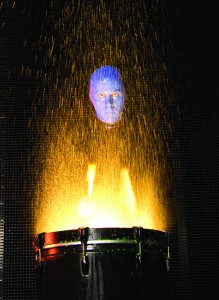
“I moved to New York to study acting. I’m the most directly related to what I moved to New York to do. My partner Chris had played music in bands, but our other partner Matt was totally from the business world. He’d been a software developer.
“If I had to say what we were searching for, it was some way to express what we saw was essential to living a fully human life. It was like having a really good social life, and the project satisfied that, as a way to have collaboration and feel like you were part of a community. Another thing that we thought was essentially human was some way to explore our creativity. The (Blue Man) character embodies both of those things. Three is the smallest number that can be part of a group and the Blue Man just has this innocent creativity and a curiosity about the world and our technology.
“Chris had the idea of this bald and blue character. We started without any kind of theatrical material at all. We’d go out and walk on the streets, or go and sit in a bar, and see how people would react.
“So we had the look of the characters before we knew what they would do. Then, because we kind of wanted to express something ancient and tribal and visceral, we thought the character would play drums, and so we started to build our own drums.
“I guess over the first two years we started gathering material and getting more bits until we had a whole hour and a half of material. There are some things that remain from those very first days, like the character enjoying seeing the sound of a drum by putting paint on it. That’s such a timeless sort of idea; it’s something that feels ancient. It’s the core way that the character likes to behave; those gooey, wet, primordial bits are still in the show today.
“What changes, though, is this look at technology in the world around us. We didn’t have cell-phones and the Internet the way they are now. So the character is always trying to go out and explore our world and trying to see the way we live, then find those elements that are really relevant and have changed our lives.”
Each new technological advance must be like a gift with Blue Man, I suggested.
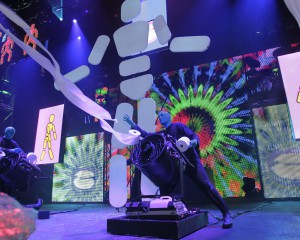
“We like to have fun with the latest technology, and especially when it comes to things which really affect the way we live. I think the character’s natural curiosity is always asking what is this doing to us; how is it changing our lives?”
You performed for the first three or so years, but now you concentrate more on developing the work. How do regard the shift to developing the work from the outside rather than being inside it?
“I did perform as recently as last Spring when we did a benefit performance. And I’ve been bald and blue since then for video stuff, but I don’t perform live in the shows any more. If it had been an abrupt thing it would have been really hard, because I really do love performing and I miss it very much. But the ability to get outside of it and watch other people bring the character to life is different. Our work actually took a leap ahead when we were able to step outside of always being in the character.”
Given the constant evolution of technology, do you have a favourite development that has influenced the show?
“Just the way that cell-phones and touch screens and our aps have developed, and our ability to stay instantly connected with people around the world.
“What I think we’re having the most fun with right now is the GiPads. They’re not really something that exists right now; they’re exaggerated touchpad screens that are eight foot tall. Of course the abilities it has surpass what can happen with a smart phone, but that’s part of the fun of it; it’s a satirical look at how they can change our lives.”
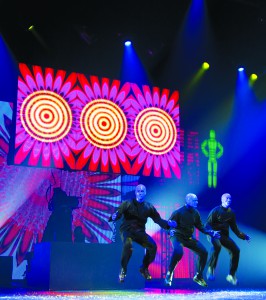
Blue Man Group started off as something quite small, Off-Broadway. When did you realize it was going to become something much bigger?
“When we first opened here in the Astor Place Theatre in New York, that’s only 300 seats and it’s an intimate experience, I think I expected us to run about six months and then we would tour college campuses or something like that.
“Somewhere about the 10th month we started seeing full houses, and we started to hear that people had a hard time getting tickets. Then we started to realize that this could really be our life work, because there were a lot of things we could do going forward; there was a lot of music to explore and a lot of emerging technology to explore.
“There’s sort of an anecdotal thing, not based on ticket sales or anything, that is probably a moment also. A friend from the performance art world came to see the show, in the early days when we were experimenting on stage a lot, and said, ‘Oh you know I don’t think Blue Man would do that.’
“At that point we realised, Wow, this is something that other people can understand. There’s something about the character that resonates, and someone who’s not even seen it before can come in and say I don’t think the Blue Man would do that.”
Blue Man still plays in that intimate space in New York, but obviously in Australia it will play in larger commercial theatres. What impact does thathave?
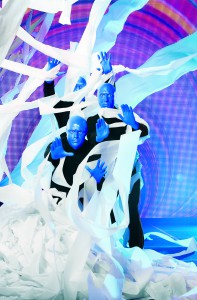 “They are different experiences. You do have to grow to fill the space, but what we’ve found is that by crafting the spectacle in the right way you can still get people to focus on the smallest gesture. I guess we’ve known that forever from other forms that play the big houses, like opera, so we’ve been pleasantly surprised over the years that some of the more intimate, small moments of interaction between the characters actually read pretty well in a large house, but you do have to craft the rest of the stagecraft, and the spectacle of it – you have to make that to play for a larger house. As an experience, what it might lack in intimacy it gains in a certain kind of heroic quality. I think the essential themes always come through.”
“They are different experiences. You do have to grow to fill the space, but what we’ve found is that by crafting the spectacle in the right way you can still get people to focus on the smallest gesture. I guess we’ve known that forever from other forms that play the big houses, like opera, so we’ve been pleasantly surprised over the years that some of the more intimate, small moments of interaction between the characters actually read pretty well in a large house, but you do have to craft the rest of the stagecraft, and the spectacle of it – you have to make that to play for a larger house. As an experience, what it might lack in intimacy it gains in a certain kind of heroic quality. I think the essential themes always come through.”
What are those essential themes?
“Contrasting the human spirit with technology, creativity, the simple curiosity that lives in the character, and that sense that they’re up there collaborating – three as one – and that they need each other. One of the other things we like to play around with is finding ways that you can see music. An example of that is when we put paint on our drums, and you can see paint fly when you hit the drum head.”
Do you have any other thoughts on bringing the production to Australia?
“I’m really excited to be there and experience the show with an Australian audience. I’ve had lots of Australian friends here in the city and every Australian I’ve ever met reminds me of the Blue Man in a way because they have this sort of innocent adventurous spirit that’s not going to take things for what they are; they’re going to dig a little deeper.”
Blue Man Group's Australian visit commences at Sydney's Lyric Theatre on August 10until September 29, also playing Crown Theatre Perth from October 12 and Her Majesty's Theatre, Melbourne from November 8.
Originally published in the July / August 2013 edition of Stage Whispers.
Subscribe to our E-Newsletter, buy our latest print edition or find a Performing Arts book at Book Nook.

